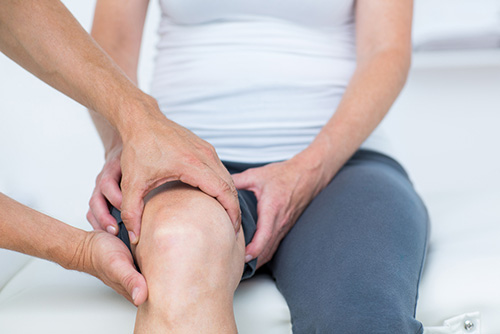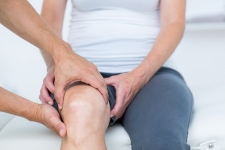Managing an ACL Tear
Symptoms of ACL Injuries
ACL injuries are often associated with a popping noise or feeling in the knee, along with severe pain and an inability to continue normal physical activities. You may experience rapid swelling. Sudden loss of a range of motion in your limb, and a feeling of instability or “giving way” when you try to put weight.

In summary, ACL injuries show the following symptoms:
- Loud popping noise in or around the knee
- Severe pain
- Sudden swelling
- Limited range of motion
- Instability or a feeling of “giving way” when bearing weight
When to Consult a Doctor
You should seek immediate medical care if you have sustained an injury to your knee that causes symptoms of an ACL injury. Your knees are a complex combination of ligaments, bones, cartilage, tendons, and other tissues that combine to give your leg full functionality. Without a quick and accurate diagnosis, you may misidentify the problem. You should seek immediate medical care if your knee sustains any severe injuries.
Causes of ACL Injuries
Your ligaments are durable bands of tissue connected from one bone to another. In an ACL injury, your ligaments across the middle of the knee and connected to the thighbone are affected. Since your thighbone (femur) is connected to your shinbone (tibia), it helps keep your knee joint stable. ACL injuries are common during sports and other physical activities that put added stress on parts of the knee.
You might injure your ACL while doing the following:
- Slowing down and changing direction
- Pivoting when your foot is firmly planted
- Sudden stopping
- Awkward landing from a jump
- Direct blows to the knee or collisions like football tackles
When your ligament is damaged, there is generally a total or partial tear in the tissue. When you have a milder injury, you may have stretched the ligament, but it remains intact.
Additional Risk Factors
There are risk factors that can exacerbate your chances of sustaining an ACL injury. These include:
- Participation in specific sports like football, soccer, gymnastics, basketball, and skiing.
- Being female increases risk, possibly because of anatomical differences that include muscular strength and hormonal factors
- Inadequate physical conditioning
- Poorly fitted or worn footwear
- Inadequately maintained equipment
- Using artificial turf surfaces
Potential Complications
People with ACL injuries are more likely to develop osteoarthritis in the knee, even if they have surgery to reconstruct the damaged ligament. Several factors can influence the risk of developing arthritis, including the severity of the injury, other related injuries in and around the joint, or activity levels post-treatment.
Preventing ACL Injuries
The right exercise and muscle training can reduce the risk of ACL injuries. However, ACL injuries can happen to anyone, regardless of their physical fitness level. Proper preparation can help mitigate the risk of ACL injury and other muscular ailments. Appropriate precautions include:
- Exercises that improve the strength of the legs, especially the hamstrings, to make sure a balance in leg muscle strength overall
- Training that focuses on establishing proper technique and position when jumping or landing from jumps
- Exercise that improves technique during pivoting and cutting motions
- Strength training involving hips, legs, and the body’s core; as well as training for improving jumping and landing techniques

